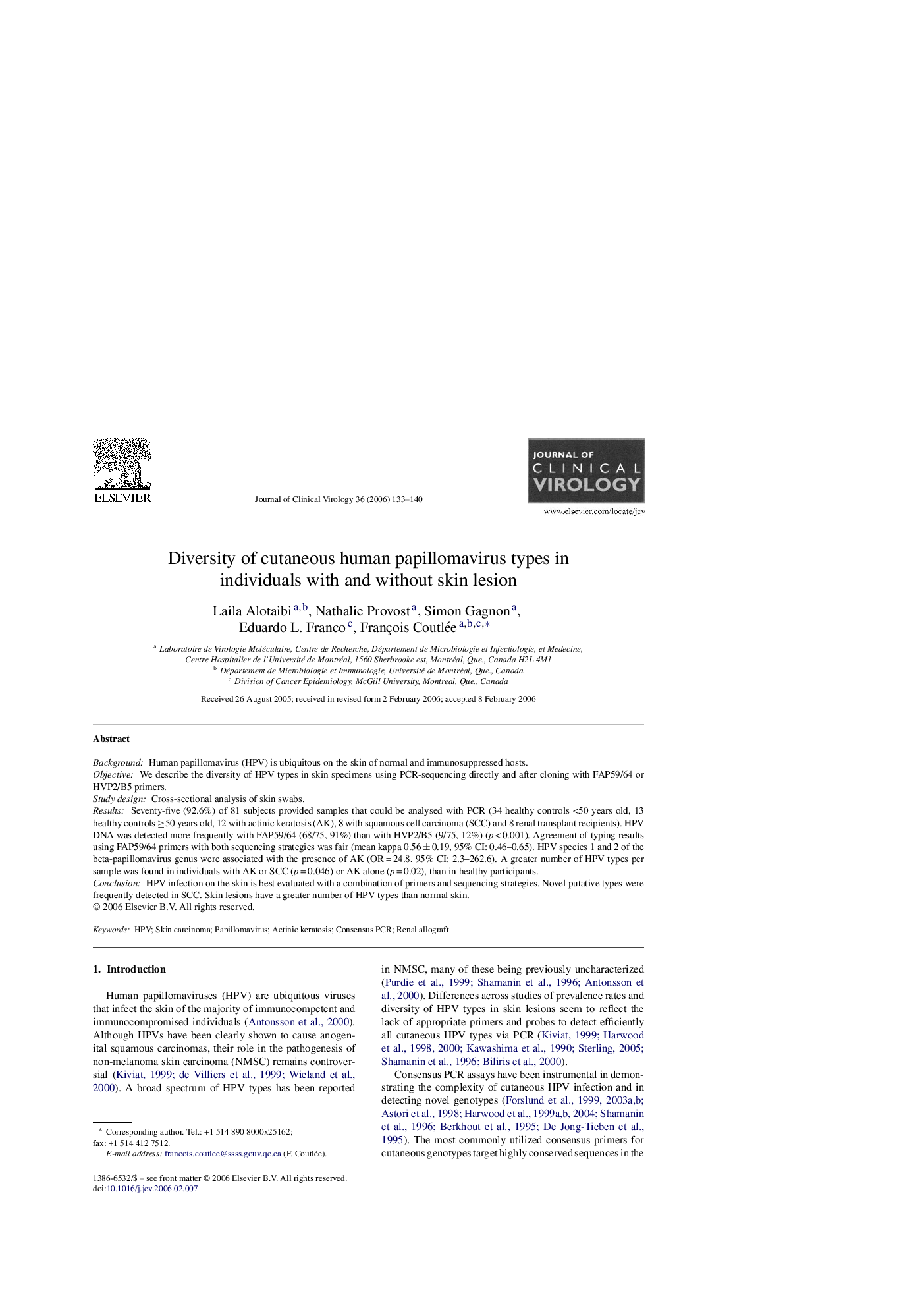| Article ID | Journal | Published Year | Pages | File Type |
|---|---|---|---|---|
| 3370849 | Journal of Clinical Virology | 2006 | 8 Pages |
BackgroundHuman papillomavirus (HPV) is ubiquitous on the skin of normal and immunosuppressed hosts.ObjectiveWe describe the diversity of HPV types in skin specimens using PCR-sequencing directly and after cloning with FAP59/64 or HVP2/B5 primers.Study designCross-sectional analysis of skin swabs.ResultsSeventy-five (92.6%) of 81 subjects provided samples that could be analysed with PCR (34 healthy controls <50 years old, 13 healthy controls ≥50 years old, 12 with actinic keratosis (AK), 8 with squamous cell carcinoma (SCC) and 8 renal transplant recipients). HPV DNA was detected more frequently with FAP59/64 (68/75, 91%) than with HVP2/B5 (9/75, 12%) (p < 0.001). Agreement of typing results using FAP59/64 primers with both sequencing strategies was fair (mean kappa 0.56 ± 0.19, 95% CI: 0.46–0.65). HPV species 1 and 2 of the beta-papillomavirus genus were associated with the presence of AK (OR = 24.8, 95% CI: 2.3–262.6). A greater number of HPV types per sample was found in individuals with AK or SCC (p = 0.046) or AK alone (p = 0.02), than in healthy participants.ConclusionHPV infection on the skin is best evaluated with a combination of primers and sequencing strategies. Novel putative types were frequently detected in SCC. Skin lesions have a greater number of HPV types than normal skin.
